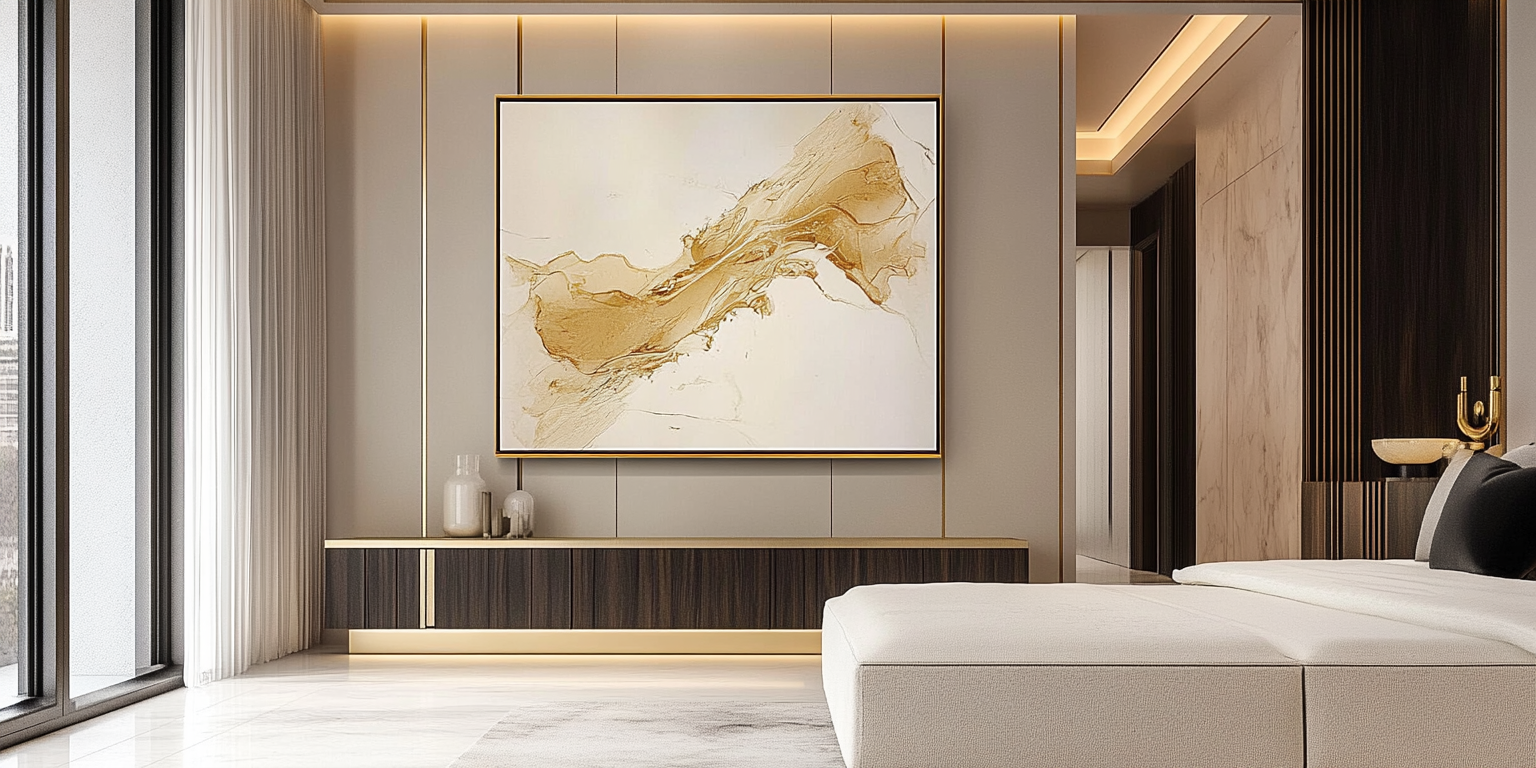Abstract art invites viewers to look beyond literal shapes and delve into an emotional, sensory experience. From bold splashes of color to subtle textures, abstract wall art offers an open-ended narrative that each person can personalize. In this comprehensive guide, we’ll explore foundational concepts, practical interpretation techniques, real-world examples, and tips for integrating abstract pieces into your home—and all with vibrant, engaging anecdotes to illustrate each point.
Understanding the Essence of Abstraction
At its core, abstraction liberates art from strict representation. Pioneers like Wassily Kandinsky saw color as a language of emotion; his swirling compositions feel like visual symphonies. Meanwhile, Jackson Pollock’s drip paintings channel raw energy through spontaneous, all-over patterns. By removing identifiable subjects, these masters compel us to engage with pure form, motion, and color balance.
- Emotional Abstraction: Works such as Mark Rothko’s color fields immerse viewers in profound moods—his deep reds can feel both intimate and overwhelming.
- Organic Abstraction: Helen Frankenthaler’s soak-stain technique produces fluid shapes reminiscent of water flowing across a canvas.
- Structured Abstraction: Piet Mondrian’s grid-based pieces, explored further in Abstract vs. Geometric, reveal how precise geometry evokes harmony and rhythm.
Why It Matters
Understanding these categories helps you recognize the artist’s intent: are they seeking to calm, energize, or provoke thought? Knowing this sets the stage for a more meaningful connection.
Techniques for Personal Interpretation
Interpreting abstract art isn’t about finding a single “correct” answer—it’s about honoring your reaction. Try these methods:
- Gut Reaction: Spend thirty seconds observing without overthinking. Does the piece feel tranquil or chaotic? This immediate response often reveals your subconscious response.
- Color Psychology: Note how colors affect your mood—blues tend to soothe, while yellows can spark optimism. For instance, Vincent van Gogh’s yellow hues in his later works radiate warmth and hope.
- Shape Language: Curved lines suggest softness or movement; sharp angles can feel tense or dynamic. Think of the jagged forms in Franz Kline’s black-and-white canvases—they feel bold and confrontational.
- Context Clues: Titles, artist statements, or exhibition themes can provide insight, but don’t let them limit your personal narrative. Imagine a piece titled Echoes—you might see ripples in water, while someone else envisions sound waves.
Real-World Illustrations
- Jackson Pollock’s Number 31, 1950: Many viewers compare the drips to constellations—each thread of paint a star in a vast cosmic network.
- Mark Rothko’s Orange and Yellow: Exhibited in a dimly lit room, this work envelops you in a glowing, almost spiritual space.
- Piet Mondrian’s Broadway Boogie Woogie: His precision grids and colored squares pulse like New York City traffic and jazz beats.
Each example shows how abstraction can evoke memories, environments, and emotions without depicting them directly.
Bringing Abstract Art Home
When choosing pieces for your living space, consider both visual harmony and emotional resonance:
- Balance & Scale: A large abstract canvas above a neutral sofa becomes an anchor point. Conversely, a series of small works can form a gallery wall, mixing prints and sculptural elements.
- Color Coordination: Pull accent colors from the artwork into cushions, rugs, or decorative objects to create unity.
- Texture Play: Many abstract wall art pieces use heavy impasto or mixed media. These textures add depth, especially when lit from different angles.
Creative Display Ideas
- Layered Frames: Mount a transparent plexiglass panel in front of your art to let wall color peek through, adding dimension.
- Rotating Showcase: Change the piece seasonally to refresh your environment—light pastels for spring, rich tones for autumn.
- Focus Lighting: Use adjustable picture lights or track lighting to highlight brushstrokes and textures, transforming perception as you move around the room.
Deepening Your Engagement
- Journaling Sessions: Write your impressions, then return after a week to see how your interpretation has evolved.
- Group Discussions: Host a small gathering where each guest describes what they see—discover how diverse personal stories can be.
- Mindful Meditation: Sit quietly in front of the piece, focusing on a single color or shape for two minutes. Notice how thoughts shift.
Conclusion: The Ever-Evolving Dialogue
Abstract art thrives on its openness. It’s a dynamic conversation between creator and viewer, constantly rewritten with each encounter. Whether you’re an experienced collector or a curious newbie, engaging with abstraction can spark creativity, foster reflection, and enliven any room. Embrace your unique perspective, let abstract wall art challenge your perceptions, and enjoy the endless exploration.





